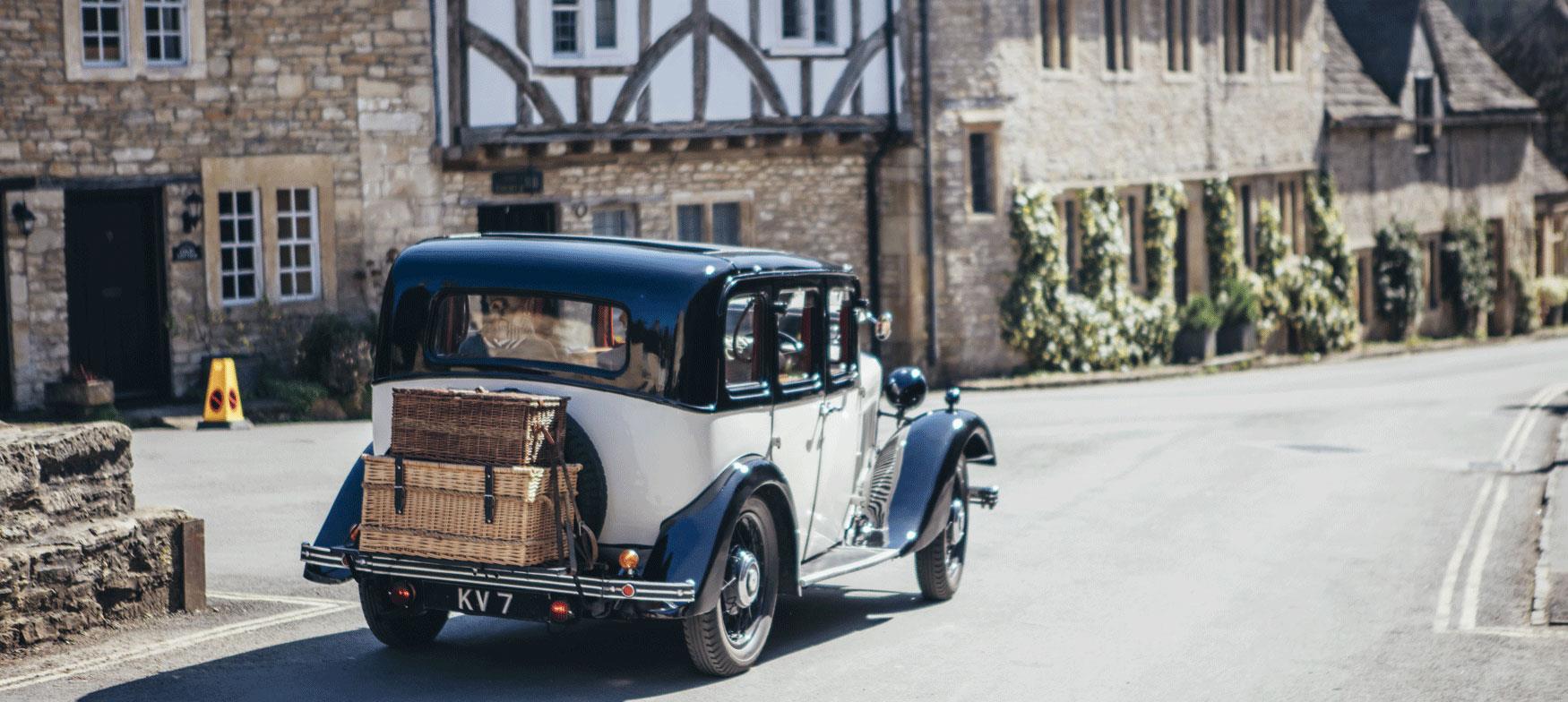To provide you with the best experience, cookies are used on this site. Find out more here.

To provide you with the best experience, cookies are used on this site. Find out more here.


You are here: Home > Plan Your Way > Recommendations > How to: Drive the Great West Way
Sometimes the easiest way to travel is by car, following your own itinerary and meandering off the planned route when the mood takes you. Hire – or bring – your own wheels and you can set the pace, travelling the Great West Way in just a few days or taking a week or two to uncover some of England’s best kept secrets.
Best routes
The route of the Great West Way was one of the six Great Roads proposed by King Charles I in the 17th century. Today this lifeblood road has become the modern A4, running through the towns of Maidenhead, Newbury, Marlborough and Chippenham, before reaching Bath and Bristol. Each of these towns is a useful hub on the Great West Way, standing at the meeting point of several major A roads that can get you further off the beaten track.
The Great West Way also follows a similar route to the M4 motorway, one of England’s busiest thoroughfares, crossing the heart of the country’s south from London and Heathrow airport in the east to Bristol in the west. This is used by thousands of commuters and lorries every day and traffic is often heavy, meaning it is best avoided – you’re on holiday so why join the fray?
Far better to pull off the main highway, slow down and take to England’s country roads instead. These are almost always single carriageway (one lane in each direction, with no overtaking lane) and although they may not cut across the landscape in the most direct way, they tend to yield the greatest rewards – coaching inns that have stood for centuries, humpback bridges that vault across the Kennet & Avon Canal and tiny villages with ancient churches that have presided over the landscape for centuries.
Some of the best routes to take are the lesser-known ones. Try the A4094 north along the River Thames from Maidenhead to Cookham, the quintessential English village, and on to the B4447 west to Marlow, another riverside beauty. Or leave the A338 at Wilton to meander northwards towards Great Bedwyn, passing the Wilton Windmill – still producing flour – and the steam-fired Crofton Beam Engines as you go. North of Bath the Cotswold Area of Outstanding Natural Beauty begins and a network of roads criss-cross the farmland and pass picturesque honey-stoned cottages to reach the gorgeous village of Castle Combe and the 17th century mansion at Dyrham Park.
Hiring a car
Hiring a car to travel the Great West Way is easy, with all the usual hire car companies represented along the route. Heathrow and Bristol airport are the best places to pick up your car, with all of the big names having desks either in the terminal or within easy walking distance – both airports have Alamo, Avis, Budget, Enterprise, Europcar, Hertz, National and Sixt. Reading, Swindon and Bath are also good places to pick up a car.
You’ll get the cheapest price by dropping off your vehicle in the same place you picked it up so planning an itinerary that returns to your starting point can save money. It’s possible to pick up and drop off in different places (for example, you could pick up a car at Heathrow and drop it off in Bristol) but this often incurs a one-way fee, which can be quite sizeable.
Almost all hire cars in England are manual; if you need an automatic it’s a good idea to book further in advance – and be sure to specify that you want an automatic. To hire a car in England you will need to have held a full driving licence for at least a year. Some hire companies have a minimum age limit (often 21) and drivers under 25 almost always have to pay a surcharge.
Driving in England
Driving in England is relatively straightforward, with rules of the road that – in general – people adhere well to. Remember to drive on the left and travel around roundabouts clockwise, giving way to traffic coming from the right. Seatbelts must be worn by everyone in the car (front and back seats) and there are plenty of speed cameras, so stick to the limit. Distances are measured in miles not kilometres.
Parking
Most attractions have designated parking, which is very often free of charge. In towns and cities parking becomes more of a hassle, and fees to park can be hefty. A blue sign with a white P at its centre denotes a car park and these are usually signposted from the entrance to the town. Look for a pay and display ticket machine; most take coins with only a few taking notes and credit cards so try to keep some small change in the car. Increasingly there are options to pay via text or a phone app too.
In Bristol and Bath you are better to leave your car outside the city centre in one of the park and ride car parks. These are signposted on the approach to each city and parking is free; you simply pay for the bus into the centre. Most larger hotels have parking and others will have an agreement with a particular car park nearby – it’s always worth checking when you book what the parking arrangements are and how much you will be charged.
For more information on driving the Great West Way, take a look at our Road page in the Explore section.
© Great West Way 2025.






